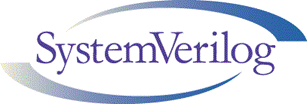A Decade of SystemVerilog: Unifying Design and Verification?
 added Object-Oriented Programming features for testbench development to a language predominately used for RTL design synthesis. Making debug easier was one of the driving forces in unifying testbench and design features into a single language. The semantics for evaluating expressions and executing statements would be the same in the testbench and design. Setting breakpoints and stepping through the code would be seamless. That should have made it easier for either a verification or a design engineer to understand a complete verification environment. Or maybe it would enable either one to at least understand enough of the environment to isolate a particular problem.
added Object-Oriented Programming features for testbench development to a language predominately used for RTL design synthesis. Making debug easier was one of the driving forces in unifying testbench and design features into a single language. The semantics for evaluating expressions and executing statements would be the same in the testbench and design. Setting breakpoints and stepping through the code would be seamless. That should have made it easier for either a verification or a design engineer to understand a complete verification environment. Or maybe it would enable either one to at least understand enough of the environment to isolate a particular problem.Ten years later, I have yet to see that promise fulfilled. Most design engineers still debug their simulations the same way they debug in the lab: they look at waveforms. During simulation, they rarely look at the design source code, and certainly never look at the testbench code (unless it’s just basic pin wiggling like a waveform). Verification engineers are not much different. They rely on waveform debugging because that is what they were brought up on, and many do not even realize source-level debugging is available to them. However the test/testbench is more like a piece of software than a hardware description, and there are many things about a modern testbench that is difficult to display in a waveform (e.g. call stacks, local variables, and random constraints). And methodologies like the UVM add many layers of source-level complexity that most users do not have the time to wade through.
Aucun commentaire:
Enregistrer un commentaire